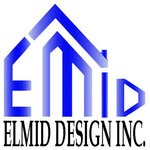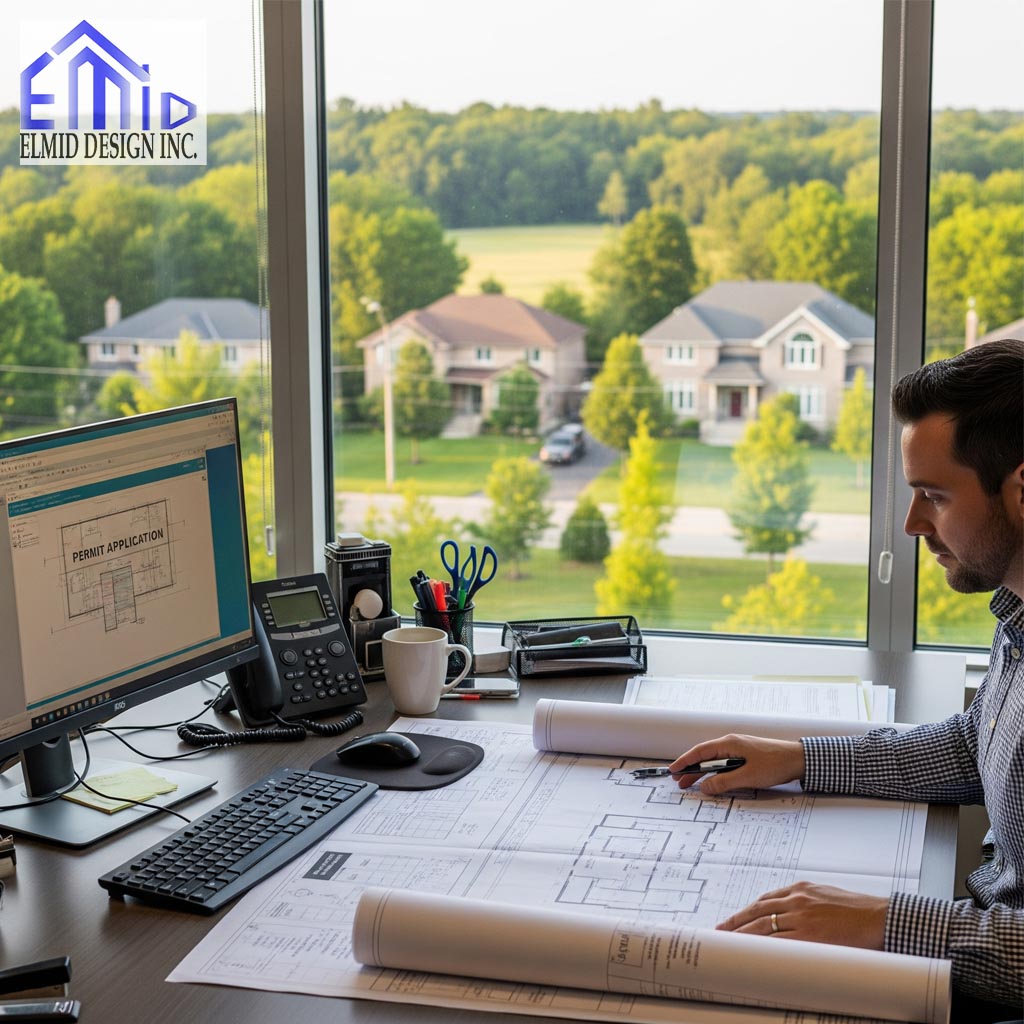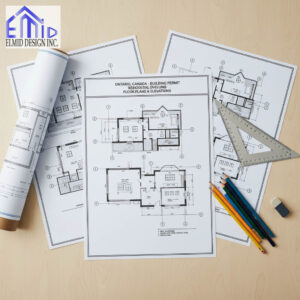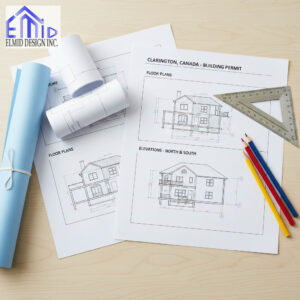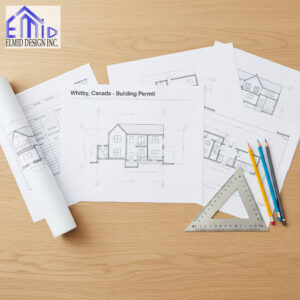This article guides you through the process of obtaining an Accessory Dwelling Permit Burlington from first principles. You will learn how permits align with local zoning, what rules matter most, and why this matters for smart, lawful lending of housing. The clarity and authority aim to meet trusted SEO standards while keeping your reading smooth and insightful.
Understanding Accessory Dwelling Permit Burlington
An Accessory Dwelling Permit Burlington refers to the formal approval required to add a self‑contained living space—known as an accessory dwelling unit—on a qualifying residential property in the city. That permit ensures your project meets city zoning regulations and building code. It represents official permission and lets your ADU become legal and compliant.
Why an Accessory Dwelling Permit Burlington Matters
Securing the Accessory Dwelling Permit Burlington shows you understand municipal standards and that your project supports the city’s housing strategy. It reflects expertise and authority, aligning your project with planning principles. A properly permitted ADU enhances safety, value, and trust in your renovation project.
Zoning Rules for Accessory Dwelling Permit Burlington
The Accessory Dwelling Permit Burlington process begins with zoning rules. Eligibility hinges on being in zones like R1.1, R1.2, R2.1, R2.2, R2.3, R2.4, R3.1 or R3.2. Detached dwellings qualify, and the accessory unit can occupy no more than 40 percent of the total floor area. You must maintain a minimum rear yard amenity space of 135 m² and provide three parking spaces in total. Your separate exterior entrance cannot face the street and must respect privacy standards. These zoning guidelines determine foundational compliance for your ADU.
What the Pre‑Building Process Looks Like
The Accessory Dwelling Permit Burlington process starts with a consolidated pre‑building application that includes a zoning clearance certificate. You must submit a detailed site plan, survey, floor plans, elevations, and measurements. The site plan needs dimensions of driveways, parking, walkways, and yard spaces, all in metric scale. A survey by an Ontario Land Surveyor establishes lot boundaries and layout. These documents provide the basis for both planning and technical review of your ADU project.
Understanding Additional Residential Units in Burlington
The term “Additional Residential Units” or ARUs is synonymous with ADUs in Burlington. These may be attached or detached from the main home and can include basement suites, coach houses, or converted garages. The province allows up to two ARUs on a single property, increasing total units to three. Each ARU triggers a building permit process and must meet performance and zoning standards including parking requirements.
Rules Shaping ADU Dimensions and Design
Regulations shape the size, entry design, and features of an Accessory Dwelling Permit Burlington. ADUs must not exceed half of the principal dwelling’s gross floor area or 900 square feet, whichever is smaller. They must be at least 400 square feet internally, and their visual impact must preserve the character of the house. Entrances must be located at the side or rear with enclosed stairways if present. Only one driveway is allowed, and both units must connect to municipal water and sewage. Occupant vehicles must park off-street.
How Provincial Law Influences Local Permits
Ontario’s Affordable Homes Act, effective February 1, 2025, mandates that municipalities permit ADUs by right in residential zones. This major shift means the Accessory Dwelling Permit Burlington process cannot impose owner‑occupancy or limit ADU numbers per lot beyond what the province allows. Burlington still retains authority to regulate shape, size, design, parking, and affordability measures. Enforcement gives local planning systems both flexibility and clarity.
Ensuring Safe and Legal ADU Construction
An Accessory Dwelling Permit Burlington requires full compliance with the Ontario Building Code, fire safety, structural and site‑specific standards. Enforced inspections during construction ensure safety and sanitation. Plan your renovation or new build to include staging for inspections—starting foundation, framing, and final occupancy. Following thorough engineering and architectural planning underpins expert, trusted outcomes.
The Role of Professionals in ADU Permitting
Navigating the Accessory Dwelling Permit Burlington often requires professional support. Architectural and structural engineers help you design a compliant unit. Planning consultants guide you through zoning clearance. Contractors manage construction details and inspections. Engaging licensed professionals like Elmid Design Inc certified by Professional Engineers Ontario enhances credibility and trust, and aligns with Google E‑A‑T emphasis on provenance and expertise.
Accessory Dwelling Permit Burlington and Housing Strategy
The city’s support for Additional Residential Units aligns with its broader housing strategy. ADUs help increase rental supply and diversify housing at lower impact than multi-building developments. Approving an Accessory Dwelling Permit Burlington aligns with local policy goals of affordable, flexible, sustainable neighbourhood growth. It demonstrates how individual projects can meet public needs within neighbourhood character preservation.
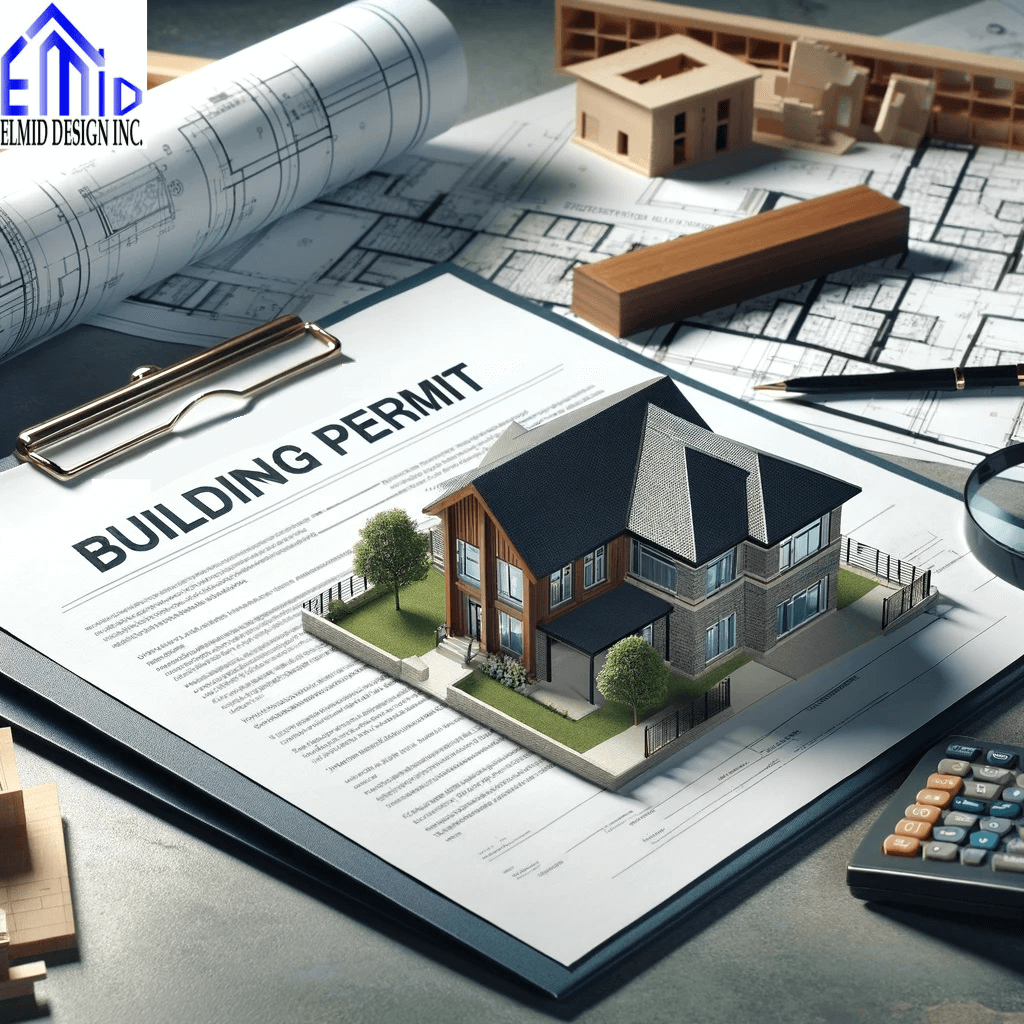
Accessory Dwelling Permit Burlington: Incentives and Support
The city offers an Additional Residential Unit Incentive Program that waives municipal fees for zoning clearance, building permits, occupancy permits and related inspections for homeowners and nonprofits seeking an Accessory Dwelling Permit Burlington. The program provides forgivable loans up to ninety‑five thousand dollars for new detached units and seventy thousand dollars for interior or attached units when the rental remains affordable for ten years and complies with program terms. It also extends a grant to legalize existing ADUs that meet building code and zoning standards.
Accessory Dwelling Permit Burlington: Eligibility Criteria
To qualify for incentives under the Accessory Dwelling Permit Burlington program, homeowners must obtain a zoning clearance certificate, submit a complete application, and comply with Ontario Building Code and city regulations. Properties must reside within the Rental Housing Community Improvement Project Area, and owners must have no outstanding municipal fees or taxes. Approval requires the unit to remain affordable for a decade and owner must agree to register the loan on title and submit annual compliance reports.
Accessory Dwelling Permit Burlington: Process Timeline
Applicants for an Accessory Dwelling Permit Burlington should move quickly because funding is allocated first‑come, first‑served and must culminate in a building permit by October 1 2025. After receiving a Letter of Intent, homeowners must complete construction and obtain occupancy no later than one year thereafter. Meeting this timeline ensures eligibility for fee waivers and forgivable financing which becomes a grant if affordability terms are maintained throughout the decade.
Accessory Dwelling Permit Burlington: Types and Zoning Allowance
Municipal bylaws under zoning Article 11.2 permit ADUs in single‑family zones as of right and limit total floor area to half of the principal dwelling or nine hundred square feet, whichever is smaller, and establish a minimum interior of four hundred square feet. Entrances must locate at the side or rear, and stairways must be enclosed. The provincial Affordable Homes Act effective February 1, 2025, reinforces the restriction that municipalities cannot limit ADU numbers nor require owner‑occupancy beyond provincial parameters.
Accessory Dwelling Permit Burlington: Step‑by‑Step Guidance
To begin the Accessory Dwelling Permit Burlington process, homeowners must confirm ownership and use the ARU Look‑up Tool to determine whether their property qualifies. After zoning compatibility is verified via the Interactive Zoning Map and checklist, applicants prepare the pre‑building approval materials and consult professionals such as BCIN-qualified designers or modular ADU manufacturers who understand local requirements. Coordinating these steps sets a strong foundation for a smooth permit process.
Accessory Dwelling Permit Burlington: Strategic Value and Trust
Securing an Accessory Dwelling Permit Burlington not only ensures legal compliance but also builds trust with municipal systems and stakeholders by demonstrating professional, responsible execution. Maintaining affordability terms over time enhances community trust and supports municipal housing goals. Aligning your ADU project with these goals enriches its strategic value and underscores the expertise and authority of your process.
Accessory Dwelling Permit Burlington: Grants for Legalizing Existing Units
Homeowners with non‑compliant existing Additional Residential Units can access a one‑time grant of up to $15,000 to legalize their unit through a valid building permit and renovation that meets zoning and building code requirements without affordability obligations. This initiative streamlines the process of bringing older or informal ADUs into compliance and reinforces municipal trust and safety standards.
Accessory Dwelling Permit Burlington: Affordability Standards
Owners applying for forgivable loans must ensure that rents remain at or below affordability thresholds for a full ten‑year period and submit annual verification to the city to maintain funding eligibility. Rental caps are clearly defined across unit types and enforce consistent affordability metrics to uphold housing policy goals and protect tenants over the long term.
Accessory Dwelling Permit Burlington: What Costs Qualify
Eligible costs under the forgivable loan program include construction materials, labour, building code upgrades like HVAC, plumbing, electrical and egress improvements, accessibility enhancements, permanent finishing’s up to 25 per cent of total cost, and professional services such as architecture and engineering up to 15 per cent.. Off‑site modular unit purchase and installation is also covered fully, excluding appliances, supporting modern, efficient construction approaches.
Accessory Dwelling Permit Burlington: Loan Conditions and Accountability
The forgivable loan carries no interest and requires registration of the agreement on the property title at the owner’s expense, accompanied by annual compliance reporting. Selling the property or violating affordability rules may trigger partial or full repayment, thus safeguarding long‑term accountability and aligning with municipal and provincial housing objectives.
Accessory Dwelling Permit Burlington: Public Engagement and Support
Residents can attend ARU information sessions to understand how to qualify for up to $95,000 per Additional Residential Unit under the city’s incentive program and take advantage of tools such as the ARU Look‑up Tool demonstrated during these sessions. These sessions promote transparency and help homeowners navigate the permit process, strengthening relationships between the city and its citizens.
Accessory Dwelling Permit Burlington: What’s Next
Together the Build‑it‑right permit process, zoning clarity, affordability standards, and financial incentives comprise a robust framework that emphasizes expertise, transparency, and trust. Owners who follow this framework participate in a structured, strategic path that delivers legal, well‑planned ADUs contributing to local housing goals, compliance, and sustainable community development.
Accessory Dwelling Permit Burlington: Program Deadlines
Adhering to timelines significantly increases your chances of qualifying for the Accessory Dwelling Permit Burlington incentives. To begin with, applicants must secure a building permit by October 1, 2025. Furthermore, approval must be obtained within one year of receiving the letter of intent and permit issuance. Otherwise, delays could result in the loss of municipal fee waivers and forgivable loan eligibility. As a result, staying on track demonstrates due diligence and, more importantly, aligns with municipal planning protocols. Therefore, it ensures a smoother progression through zoning, permitting, construction, and final occupancy stages.
Accessory Dwelling Permit Burlington: Compliance and Risk
Continuing compliance sustains long‑term benefits. If the property sells or affordability terms are violated, partial or full repayment of the forgivable loan may result. A legal agreement existing on title enforces accountability by binding future owners to program terms. Maintaining proper annual reporting ensures alignment with program rules. These measures preserve public trust, reinforce the credibility of the permit process, and reflect rigorous stewardship by homeowners who follow through with these obligations.
Accessory Dwelling Permit Burlington: How to Apply
To begin your Accessory Dwelling Permit Burlington application you must first obtain a Zoning Clearance Certificate and apply while funding remains. Use the ARU Look‑up Tool to verify eligibility. Follow with a complete application of required documents, submit plans after zoning clearance, and await a letter of intent. Once received you move forward with construction permits, inspections, and occupancy approval. The process aligns with Openings in the program and funding is allocated first‑come, first‑served.
Accessory Dwelling Permit Burlington: Who Qualifies
Qualifying applicants for the Accessory Dwelling Permit Burlington include homeowners, nonprofits, or businesses who own the residential property. They must ensure there are no outstanding municipal fees, taxes, or utilities. The property must lie within the designated Rental Housing Community Improvement Project Area. Compliance with Ontario Building Code and city zoning regulations is mandatory. Short‑term rentals are explicitly prohibited under program terms.
Accessory Dwelling Permit Burlington: What Incentives Exist
The city supports the Accessory Dwelling Permit Burlington with municipal fee waivers for zoning, building, occupancy, and inspections. Forgivable loans are available up to ninety‑five thousand dollars for detached ADUs and seventy thousand for interior or attached units when units remain affordable for ten years. A one‑time grant of up to fifteen thousand dollars exists to legalize existing non‑compliant units with no affordability requirement. Eligible expenses include construction, upgrades, accessibility improvements, finishes, professional services, and modular construction excluding appliances.
Frequently Asked Questions (FAQs)
What is the maximum number of ADUs allowed on a Burlington property?
You may build up to three Additional Residential Units in addition to your main home as of right. This aligns with provincial policy updates and borough zoning bylaw amendments.
Are short‑term rentals allowed in ADUs?
Short‑term rentals such as vacation rentals are not permitted and will breach the affordability or funding agreement. Owners must maintain long‑term rental eligibility.
What rent thresholds apply for affordability?
Rent thresholds for 2025 are capped at approximately fourteen hundred sixty‑four dollars for a bachelor, one thousand seven hundred thirty‑three dollars for one‑bedroom, two thousand eight dollars for two‑bedroom, and two thousand three hundred thirty dollars for three‑plus bedrooms. These are maximum allowable rents under program terms.
What costs count toward the forgivable loan?
Eligible costs include construction labour and materials, fire code or building upgrades such as plumbing, electrical, HVAC and egress, accessibility improvements, permanent finishes up to twenty‑five over total cost, professional fees up to fifteen over total cost, and full modular or prefab unit cost excluding appliances.
What happens if the affordability term is broken?
If the rental exceeds the maximum rate or the property sells prior to ten years, partial or full repayment of the forgivable loan becomes due. Reporting non‑compliance triggers these obligations.
Who qualifies for legalization grants?
Homeowners who installed non‑compliant units may qualify for up to fifteen thousand dollars to legalize their unit provided that they secure building permits and meet code without affordability obligations.
Are modular units eligible?
Yes modular or prefabricated detached ADUs are eligible under each program and can be covered fully under the forgivable loan or grant as long as appliances are excluded.
What are application deadlines?
Applicants must apply before starting work and secure a building permit by October 1, 2025. Occupancy must follow within one year of approval letter to retain incentives.
How do I verify eligibility?
Use the ARU Look‑up Tool to check property eligibility and consult the zoning clearance certificate process. Confirm that the property lies within the incentive area and has no outstanding municipal obligations.

Elmid Design Inc and Accessory Dwelling Permit Burlington
Elmid Design Inc is a trusted engineering firm with a Certificate of Authorization from Professional Engineers Ontario. Specializing in residential and commercial structural design, Elmid supports homeowners in Burlington with expert guidance through the Accessory Dwelling Permit Burlington process. From zoning compliance to detailed building plans, Elmid ensures every project meets city and provincial codes. Their professional expertise enhances project approval success, reinforcing trust, safety, and compliance. With a reputation built on engineering precision and client satisfaction, Elmid Design Inc delivers reliable, EAT‑aligned support for your next legal and compliant ADU build.
Geographic Locations That We Service:
Our Licensed Professional Engineers specializing in Engineered Site Grading Plans offer the best-engineered site grading plan, lot grading and erosion plan, and drainage plan to obtain site plan approval and building permits in Ontario, including a wide range of municipalities. Each area boasts unique features and requirements, making our tailored approach essential for success.
Toronto and Surrounding Areas
In the vibrant heart of Ontario, we service Toronto (City of Toronto) and surrounding areas. Additionally, we cover Oshawa (City of Oshawa), Pickering (City of Pickering), and Clarington (Municipality of Clarington). Furthermore, our expertise extends to Ajax (Town of Ajax), Whitby (Town of Whitby), Brock (Township of Brock), Scugog (Township of Scugog), and Uxbridge (Township of Uxbridge).
Halton Region
Moving to the Halton Region, our services encompass Burlington (City of Burlington) and Halton Hills (Town of Halton Hills). Also included are Milton (Town of Milton) and Oakville (Town of Oakville).
Peel Region
In the Peel Region, we provide services in Brampton (City of Brampton), Mississauga (City of Mississauga), and Caledon (Town of Caledon).
York Region
Our services in the York Region cover Vaughan (City of Vaughan), Aurora (Town of Aurora), and East Gwillimbury (Town of East Gwillimbury). We also cater to Georgina (Town of Georgina), Markham (City of Markham), Newmarket (Town of Newmarket), Richmond Hill (City of Richmond Hill), Whitchurch-Stouffville (Town of Whitchurch-Stouffville), King (Township of King), and Bradford-West Gwillimbury (Town of Bradford-West Gwillimbury). Each municipality here offers a distinct setting, requiring our specialized approach.
Other Southern Ontario Cities and Towns
We also serve many other cities and towns in Southern Ontario. These include Hamilton (City of Hamilton), St. Catharines (City of St. Catharines), Niagara on the Lake (Town of Niagara on the Lake), Brant (County of Brant), Cambridge (City of Cambridge), Kitchener (City of Kitchener), Waterloo (City of Waterloo), and Woodstock (City of Woodstock). Furthermore, we operate in Guelph (City of Guelph), Centre Wellington (Township of Centre Wellington), Shelburne (Town of Shelburne), Orangeville (Town of Orangeville), New Tecumseth (Town of New Tecumseth), Essa (Town of Essa), Collingwood (Town of Collingwood), Wasaga Beach (Town of Wasaga Beach), Barrie (City of Barrie), Midland (Town of Midland), Orillia (City of Orillia), Ramara (Town of Ramara), Minden Hills (Town of Minden Hills), North Kawartha (Town of North Kawartha), Kawartha Lakes (City of Kawartha Lakes), Peterborough (City of Peterborough), Selwyn (Town of Selwyn), and Brighton (Municipality of Brighton).
